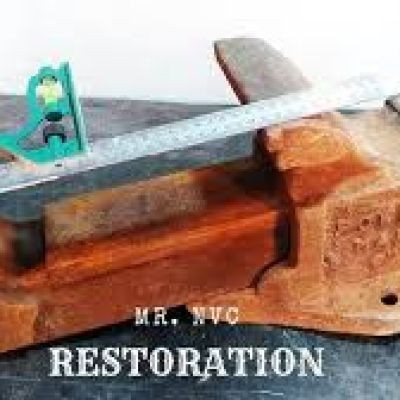- Film & Animasi
- Musik
- Hewan Peliharaan & Hewan
- Olahraga
- Travel
- Permainan
- Orang & Blog
- Berita & Politik
- Cara & Gaya
- Nirlaba & Aktivisme
- Motivation
- Autos
- Discovery
- Tech Matters & News
- Educational
- Kids Cafe
- Meals
- Behind The Scenes
- Manufacturer's Secret
- Events
- Costumes
- Do It Yourself
- Fashion
- Fitness
- History
- Agriculture
- Success Stories
- Bible Stories
- First Aid
- Articles
- Homes and Interiors
- Babies World
- Sports News
- Book Reviews
- Christian Movies
- Skill Up
- Lainnya
Bamboo Fiber in Clothing Fabric | Production Process Description (Innovative Textile) @TextileTV
#Textile #Fiber #Fabric
Bamboo Fiber in clothing fabric process description Innovative textile
Bamboo Fiber:
Bamboo fibers are cellulosic fibers produced from Bamboo Plants a type of grass. There are two methods of producing bamboo fibers namely Mechanical method & Chemical method. Mechanical methods are similar to Flax production ( retting, enzyme treatment, boiling, scutching, cutting etc.,) and this gives Natural bamboo fibers. There are two types of Chemical methods namely Bamboo Viscose Rayon method & Bamboo Lyocell method.
Bamboo Fiber, Bamboo Viscose Rayon method produces Bamboo fibers in the same way as Viscose Rayon production methods. Bamboo Lyocell method produces Bamboo fibers in the same way as Lyocel / Tencel production methods. But the majority of the bamboo fibers for textile application is produced by the Viscose Rayon Production methods.
Bamboo Fibers & Textiles are used in bed linen, bath robes, flannels, bath mats, towels, aprons, oven gloves, tea towels, nappies, sanitary napkins, intimate apparels, include sweaters, bath-suits, blankets, underwear, swimwear, tight t-shirt, socks, bandages, mask, surgical cloths, wall paper, curtains & furnishing fabrics.
Merits of Bamboo Fiber:
Soft, silky to touch, natural sheen, drapes well, highly absorbent material, quick drying, machine washable, anti microbial properties, anti UV, breathability, bio-degradable, and odors absorption properties.
Bamboo fabric is a natural textile that has been growing in popularity in recent years, both for its quality and its environmental friendliness. Bamboo fabric is made from the pulp of bamboo plants, which are actually a type of grass. The fastest growing grass species in the world, in fact, making them one of the most easily renewable natural resources we have. Aside from being more sustainable, bamboo fabric is also light and strong, with excellent wicking properties.
Properties of Bamboo Fabric:
Bamboo fiber is soft and comfortable against the skin, as it is naturally smooth and round even without any chemical treatment. Bamboo fiber has no sharp spurs to scratch against the skin, and people who are allergic to other natural fibers like wool or hemp will usually experience no allergic reactions from wearing clothing made of bamboo fibers.
The Manufacturing of Bamboo Fabric:
Bamboo fiber started being used for clothing in the 20th century. Its manufacturing began in China and spread from there. In its un-spun form, bamboo fiber looks much like cotton. When processed, the bamboo becomes heavy and pulped, at which point it can be separated into threads for spinning, dying and weaving into cloth. Many companies who produce bamboo fabric employ an extensive bleaching process, but there are companies who leave the bamboo fiber unbleached.
Mechanical Processing:
During the mechanical processing of bamboo, the bamboo plant is crushed into a pulp. The bamboo’s natural enzymes are used to form a mushy substance from which fibers can be combed out. These fibers can then be spun into yarn, which is then used as bamboo fabric or linen to make cloth products. The mechanical processing of bamboo fiber is very eco-friendly, and is similar to the manufacturing of flax or hemp cloth.
Chemical Processing:
Chemical processing is the most common form of bamboo fiber processing. Though many chemical processing methods are not environmentally friendly, there are some methods that are more eco friendly than others. Chemical processing of bamboo fiber involves “cooking” the fiber using chemicals to create a kind of regenerated cellulose fiber, which can then be used for thread and woven into cloth fabric. All parts of the bamboo plant are used in the process of turning it into usable fabric.
Environmentally Friendly Chemical Processing:
The Lyocell process is generally considered to be the most environmentally friendly method of manufacturing bamboo cloth fiber. This is because it is in general more sustainable than most common chemical processing methods. According to the FTC, Lyocell is defined as a cellulose fabric made by an organic solvent spinning process. The chemicals used in this processing method are non-toxic and much safer for humans than other traditional processing chemicals. About 99.5% of the chemicals used are captured in a close-loop container, which means they can then be recycled with minimal amounts of them being released into the environment, avoiding air and water pollution.
Right now, people are still in the process of the developing new manufacturing methods to add to the available “green” options of bamboo fabric making. One of these processing methods is Greenyarn, which makes use of chemicals to form nano bamboo charcoal particles that can be woven into fabrics.
Textile Manufacturing process, Garments manufacturing process, fabric manufacturing process, yarn manufacturing process





















